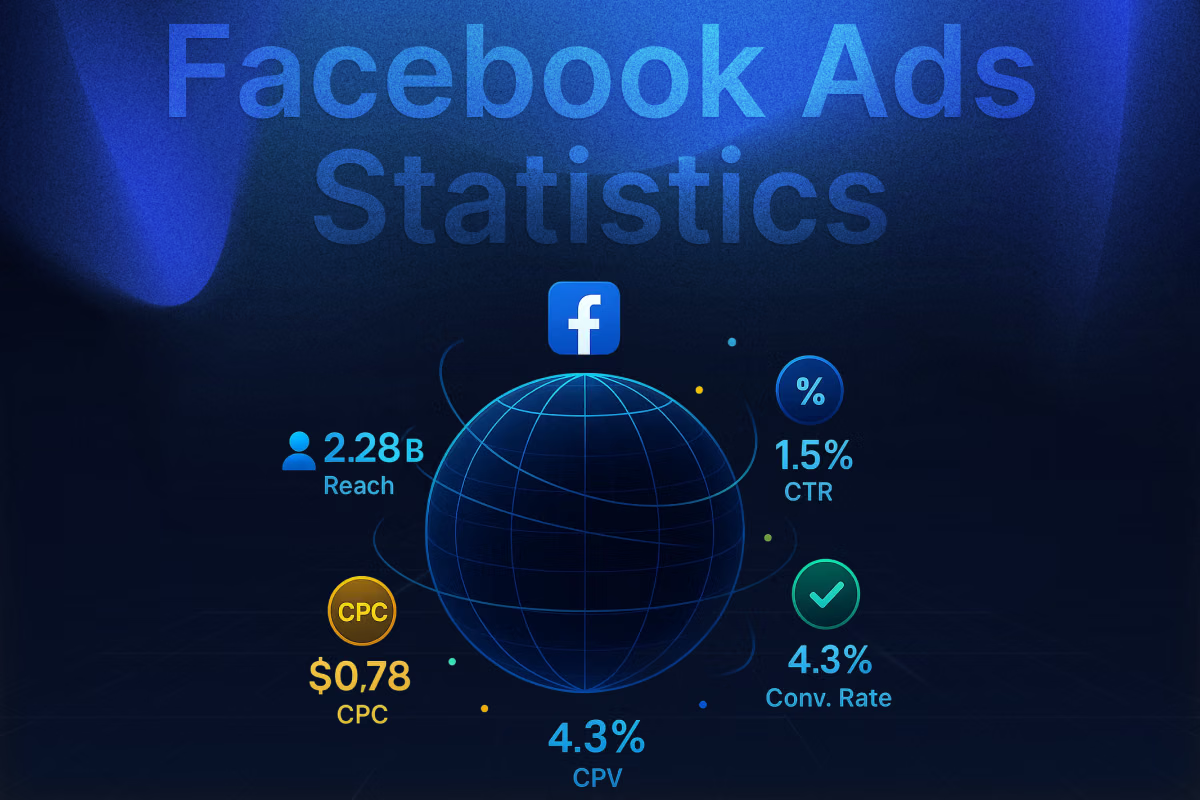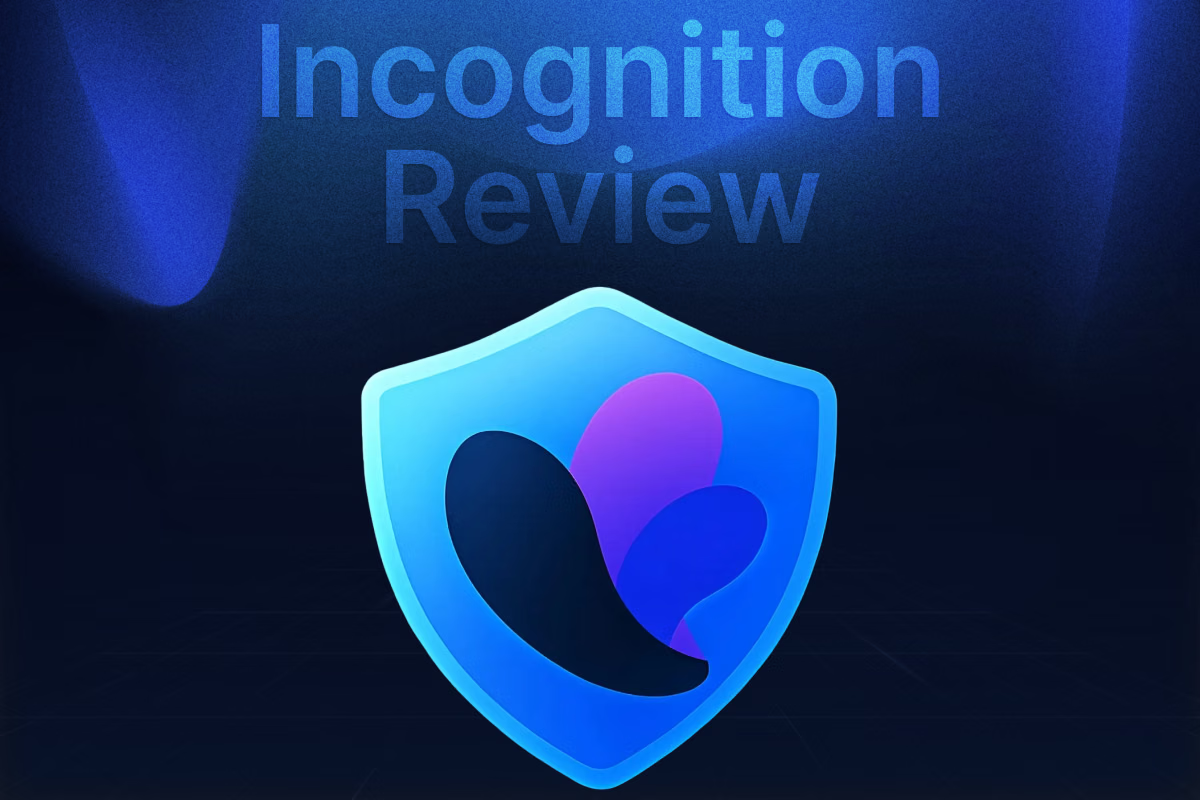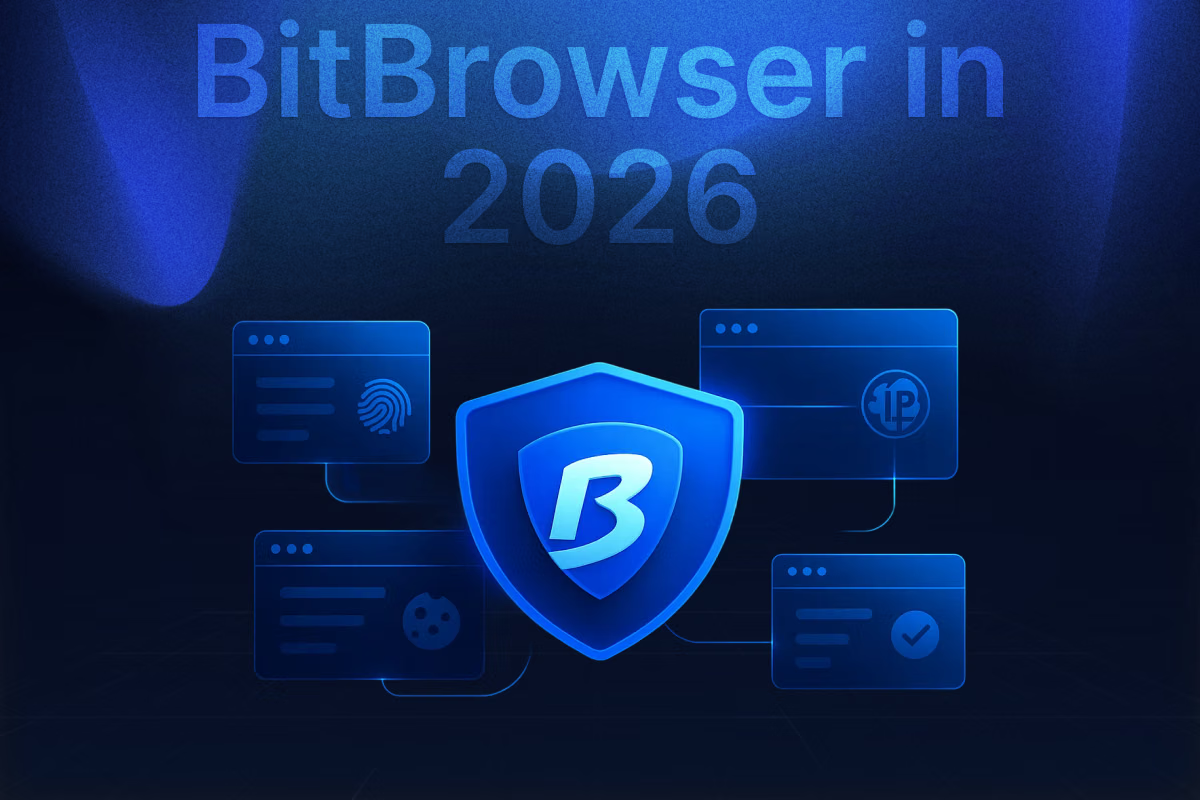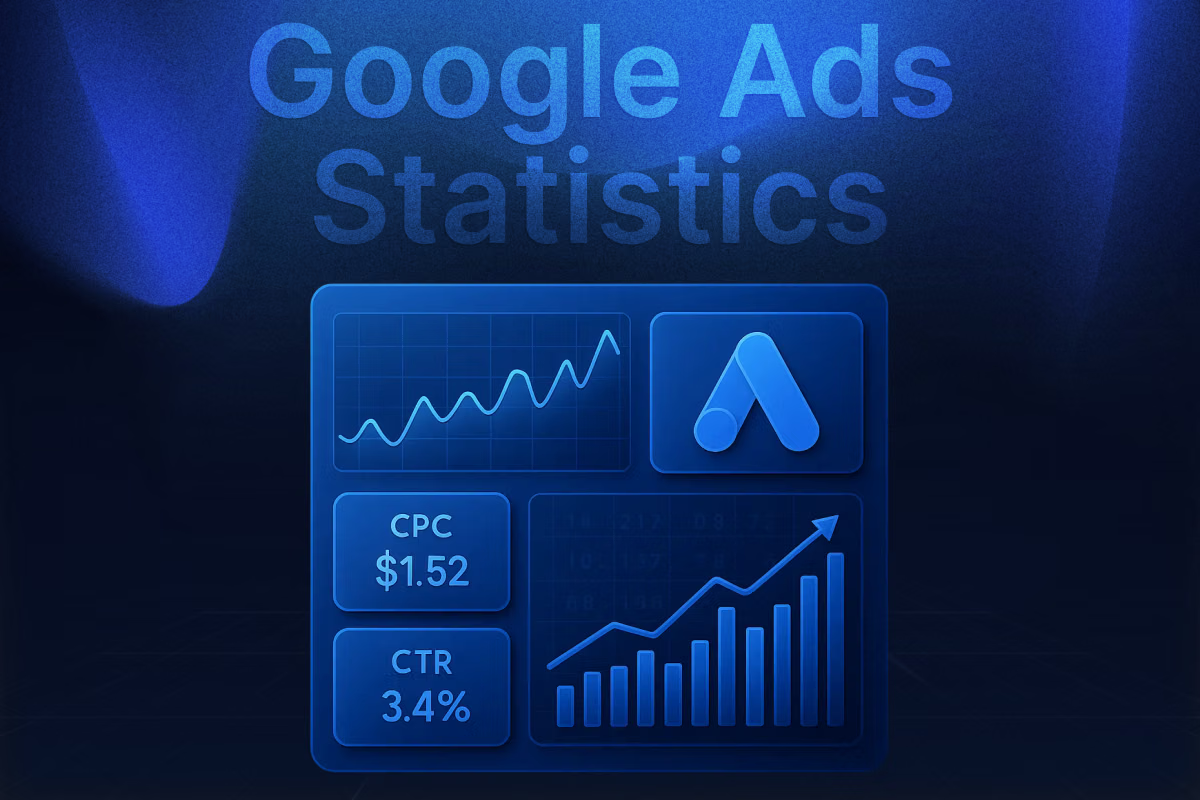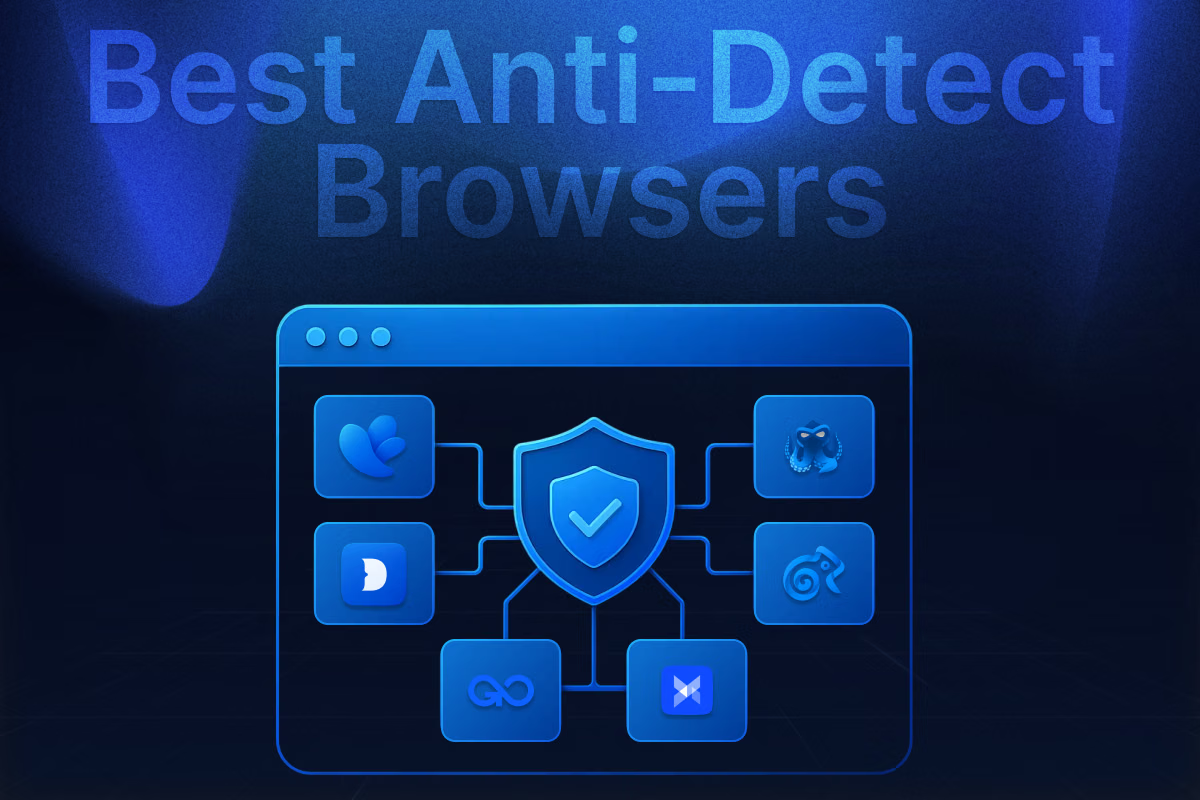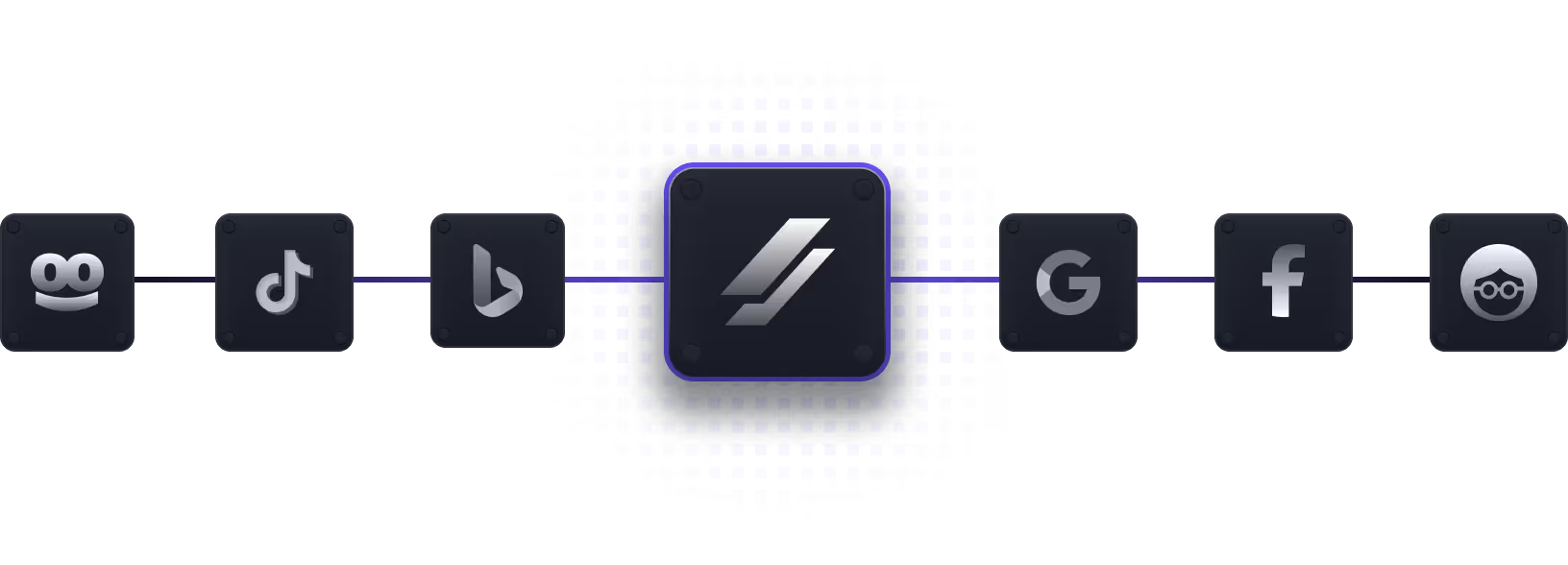Ad Arbitrage is a witty digital marketing technique that gives you access to an entirely new market of the advertising business. It, however, is widely misunderstood and quite unclear to most entrepreneurs in the digital marketing space. In a nutshell, ad arbitrage is a marketing model involving you buying cheap traffic and selling it to publishers with a profit. The page that buys from you gets access to extra advertising traffic and you get to keep the difference in price, in most cases, turning out to be a win-win situation for both parties.
Although the idea is simple, there are quite a few nuances to handle in this business. The model runs largely on strategies invested in smart reselling. Ad Arbitrage, also known as marketing or traffic arbitrage, involves the clever identification of platforms selling online traffic and the rates they offer and also having the knowledge of the price ad publishers are willing to pay for that same traffic. It can be a scalable and highly profitable business model if you do it right.
This blog is all about ad arbitrage and how you can do it the right way in 2025. Follow the mentioned strategies to make sure the foundation of your ad arbitrage business model is firm and pointing in the right direction.
How Ad Arbitrage Works: The Core Model
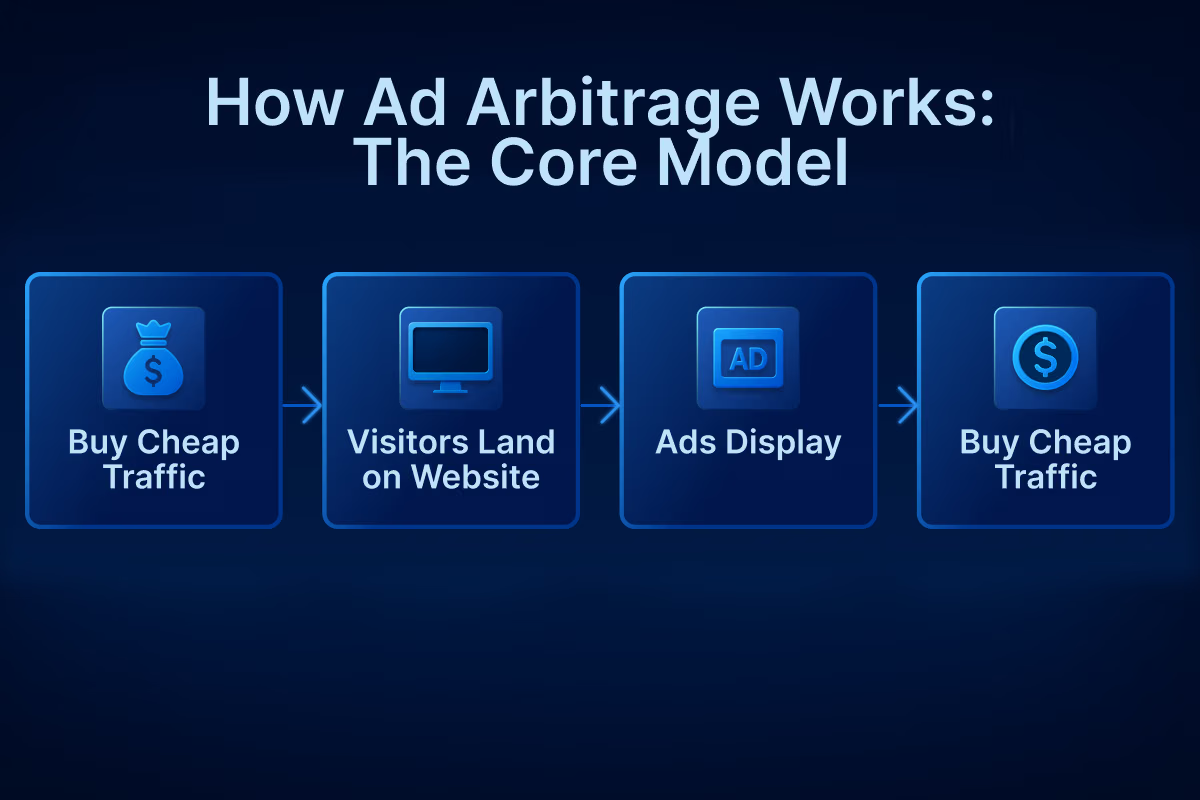
The idea behind ad arbitrage is as simple as any other business model. You buy a product for cheap from somewhere and you sell it to a customer for a profit. In this case, the product is internet traffic, or in a more philosophical way, the attention of the people. The ‘somewhere’ includes platforms that sell internet traffic, in other words, lets you advertise your website on their platform. And the customers are publishers who want to advertise and are hungry for more and more online traffic.
The process typically looks like this:
- Create your webpages: Ad arbitrage revolves around the idea that people will visit your site, be it for interesting content or for attractive advertising. You need to make sure you have a number of content-heavy landing pages or webpages that allow you to bring in audiences. These are also the webpages that will host ads for your customers, or in this case, the ad publishers.
- Buy cheap traffic: This means you have to advertise. The whole idea behind ad arbitrage depends on you buying traffic from platforms to your landing pages. In other words, you have to put out ads at the cheapest rates possible with huge amounts of online traffic. This is where you get to put your digital marketing skills to the test. You can buy cheap ad traffic from platforms like Taboola, Revcontent, Outbrain, Facebook, TikTok, or other native ad networks.
- Monetize your webpages with ads: The final step is to put in clickable and effective ads on you webpages and monetize them at a profitable rate. Now, doing this manually is going to be way too complicated and inefficient. What you really want to do is monetize your webpages through ad publishing services like Google AdSense, Mediavine or Ezoic and search feed arbitrage providers.
- Get more clicks and views on your ads: Ad arbitrage business models depend on CPCs (cost per click) and CPMs (cost per thousand impressions) or other metrics of a similar kind. The message is simple: make sure the viewers you’ve gained to your website through all of this advertising end up clicking on or interacting with the ads placed on your webpage.
Popular Ad Arbitrage Traffic Sources
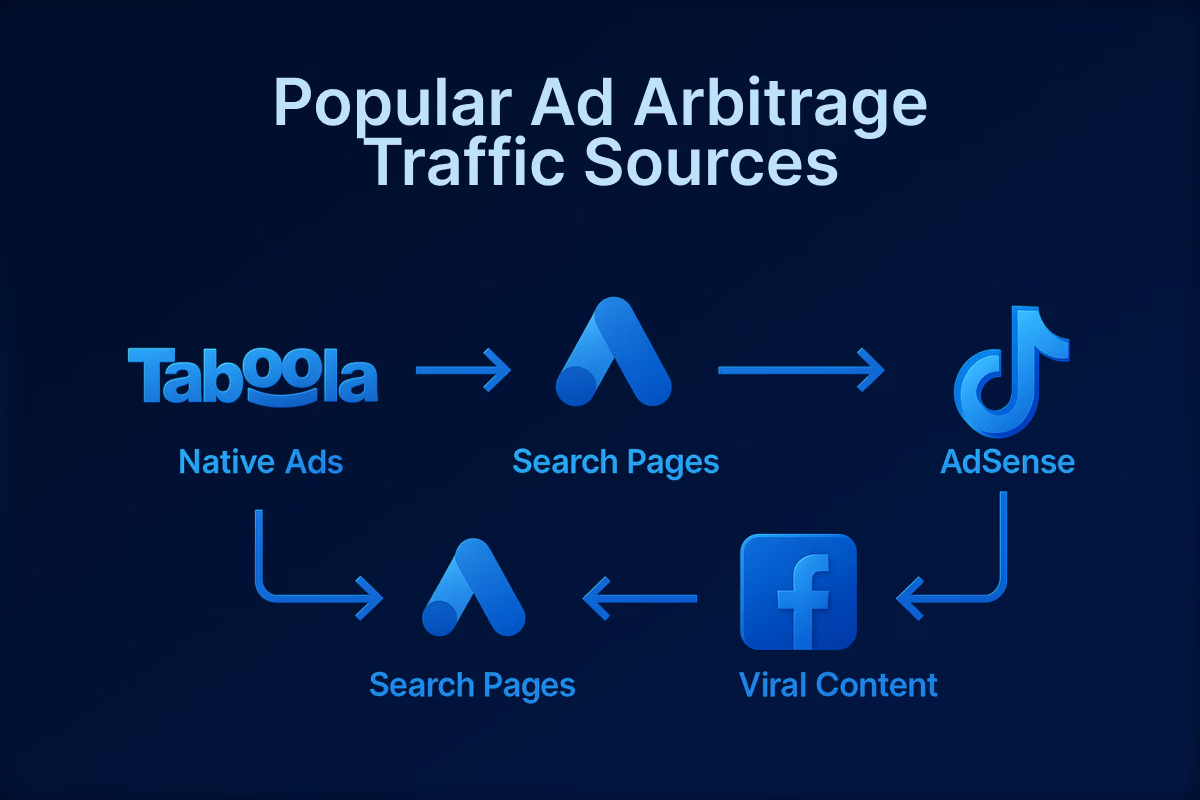
The first decision you have to make in creating your ad arbitrage model is how to source your traffic. Internet traffic is at an all-time high and people seem chronically online. But different platforms sell this traffic (i.e. let you advertise) at different rates. In most cases, the costs for advertising fluctuates with time and content. Making a cheap purchase of traffic is key to making your ad arbitrage model work.
What’s important to understand here is that all traffic sources don’t give you the same type of results. While some platforms give you high volumes of traffic at low rates, the traffic might have a high bounce rate, meaning that viewers land on your webpage but ignore it and quickly move on. Some other platforms might be only giving your traffic that cares about viral products and content. As a digital marketer and businessman, it depends on you to identify what kind of content you want to put on your webpage and the platform that’s best suited for delivering the appropriate traffic.
Some of the most popular ad arbitrage funnels include:
1. Native Ads → Search Pages (Classic Native to Search Arbitrage)
This is one of the oldest and most scalable forms of arbitrage. Marketers buy traffic from native ad platforms like Taboola, Revcontent, or Outbrain and direct users to search feed pages (monetized through partners like AdMarketplace or System1). Users who click on search results generate revenue.
Pros
- High click-through potential since search intent is preserved.
- Works well with Tier-1 and Tier-2 countries.
- Easier approval with feed providers if traffic is clean.
- Predictable RPM and scalable with automation tools.
Cons
- Requires compliance with feed partner rules (strict on layout and content).
- Creative fatigue is common, headlines must be refreshed often.
- High competition drives up native ad costs in Tier-1 regions.
- Risk of loss if CTR on feed page drops below threshold.
2. Facebook Ads → AdSense Pages
This model uses Facebook ads to send traffic to websites monetized with Google AdSense or similar networks. It’s a common choice for content publishers who focus on engaging stories, quizzes, or listicles.
Pros
- Precise audience targeting (demographics, interests, behaviors).
- Strong user engagement potential on viral or emotional content.
- Excellent for content testing and A/B experiments.
- Can generate high RPM from lifestyle or entertainment content.
Cons
- Facebook ad policies are strict; accounts can get flagged easily.
- CPCs and CPMs are higher than native ad platforms.
- Requires constant creative and page optimization.
- Poor engagement metrics can trigger account restrictions.
3. TikTok Spark Ads → Viral Content (Programmatic Monetization)
TikTok’s Spark Ads let you promote organic-style videos that drive traffic to off-platform content. Arbitrage marketers use this funnel to push viral-style pages monetized through AdSense, Ezoic, or programmatic ad networks.
Pros
- Huge organic reach and viral potential.
- Lower traffic costs than Facebook in some regions.
- Ideal for content arbitrage using trending topics.
- High engagement rate on visual and entertainment content.
Cons
- Users have short attention spans, bounce rates can be high.
- Frequent creative updates needed to maintain engagement.
- Strict moderation policies for outbound links.
- May not perform well with text-heavy pages.
4. Google Display Ads → News or Blog Portals
This funnel involves buying traffic via Google Display Network (GDN) and directing it to news, finance, or lifestyle websites that run AdSense or other ad networks.
Pros
- Massive audience reach with advanced targeting.
- Ideal for scaling informational or news content.
- Reliable for long-term campaigns with clean layouts.
- Easy integration with remarketing and automated bidding.
Cons
- Higher CPCs in competitive niches.
- Risk of overlapping ads (Google serving both paid and monetized ads).
- Requires policy-compliant, high-quality content.
- Lower CTR on some placements can affect profitability.
5. Push & Pop Traffic → High-Volume Landing Pages
Push notifications and pop-under ads drive massive volumes of inexpensive traffic. These visitors are sent to simple, ad-heavy landing pages that generate revenue through multiple ad impressions or redirects.
Pros
- Extremely cheap traffic, great for testing and scaling.
- Works well with Tier-2 and Tier-3 geos.
- Easy setup and automation-friendly.
- Simple creatives, fast campaign launch.
Cons
- Lower-quality traffic and poor engagement metrics.
- High bounce rates can harm AdSense or feed approval.
- Needs filtering to remove bot or fake traffic.
- Not ideal for long-term brand building or user retention.
These traffic arbitrage ads rely on strong creatives, smart geo-targeting, and clean user experiences. Arbitrage is not about tricking users. It’s about optimizing value exchange: low-cost entry, high-quality monetization.
Best Practices while Using Each Traffic Provider
Each traffic funnel has its strengths and risks, there’s no “one-size-fits-all.” Successful arbitrage traffic strategies depend on:
- Your budget and risk tolerance
- The traffic quality and geo targeting
- The type of monetization (AdSense, feed, or programmatic ads)
Smart arbitrage is about experimentation and balance, using multiple sources, testing creatives, and optimizing pages for real engagement.
The best usage scenarios for each traffic provider can be seen as:
AdSense Arbitrage: Still Viable?
Google AdSense is the first name that pops up in the ad arbitrage business. AdSense has become the bread and butter or digital marketers trying out an ad arbitrage model. The reason is that it’s simple and efficient - two things that make the ad arbitrage business a viable option. Google AdSense is now immensely popular, with thousands of marketers now in the business. Unfortunately, Google has decided to make AdSense stricter than before, making strategies all the more important.
Google now enforces tight rules around AdSense-safe traffic. Violating these can lead to quick bans or permanent account loss. This is done mainly to protect users who browse onto your webpage. Google wants to make sure that the webpage they are monetizing is ethical and safe and operating under acceptable standards.
To make sure you can still use Google AdSense for ad arbitrage in 2025, you need to follow their standards. Here’s how to stay compliant:
- Use original, valuable content. Avoid thin pages stuffed with ads.
- Monitor user engagement. High bounce rates and low session times signal poor experience.
- Avoid deceptive or clickbait titles.
- Never use automation or bots. Google’s detection tools are extremely advanced.
- Don’t buy from paid search sources unless you’re an approved feed partner.
Search Feed Arbitrage Explained
Search feed arbitrage is another profitable (and often overlooked) branch. Instead of showing display ads, you place a search feed on your landing page. When users type queries or click results, you earn a payout per click.
This model works best when you partner with search arbitrage feed providers such as:
- AdMarketplace
- System1
- Bing Search Partners
To make it profitable, you’ll need:
- High click-through rates on your search results page
- Strong geotargeting (Tier-1 countries like the US, UK, and Canada offer higher payouts)
- Well-structured, fast-loading pages that look and feel like real search portals
Many experienced marketers use native to search arbitrage funnels — buying native ad traffic and sending it to search feeds, to scale safely and profitably.
Scaling Arbitrage in Tier-1 vs Tier-2 vs Tier-3 Countries
When scaling ad arbitrage, geography matters a lot. The cost of traffic, ad payouts, and even audience behavior vary widely depending on the region.
- Tier-1 countries (like the US, UK, Canada, and Western Europe) offer the highest CPCs and RPMs, but also the highest competition and ad costs. To succeed here, focus on quality and user engagement. Your landing pages should be well-designed, your content long-form and trustworthy, and your ad placement balanced — quality beats quantity every time.
- Tier-2 countries (such as Eastern Europe, Latin America, and parts of the Middle East) represent a sweet spot for many arbitrage marketers. Traffic costs are significantly lower than Tier-1, but the ad payout potential is still strong. This makes Tier-2 regions ideal for testing campaigns, optimizing funnels, and finding profitable angles before scaling globally. Publishers can run mid-budget campaigns here and fine-tune layouts, creatives, and targeting without high risk.
- Tier-3 countries (including regions in Southeast Asia and Africa) provide extremely cheap traffic, but with lower monetization potential. These markets are best for volume-based strategies, automation, and data collection. Here, profit comes from efficiency — running multiple low-cost campaigns, optimizing traffic flows, and maximizing ad impressions.
Each region demands a different scaling mindset. The best arbitrage strategies combine Tier-1 precision, Tier-2 experimentation, and Tier-3 volume, creating a diversified funnel that balances profit and risk across geos.
Digital Arbitrage Meaning in Broader Terms
The term digital arbitrage goes beyond just ads. It simply means profiting from market inefficiencies in digital ecosystems.
Here’s how it shows up across industries:
- Affiliate Arbitrage: Buying traffic and sending it to affiliate offers for commission.
- SaaS Arbitrage: Reselling or repackaging software solutions with a markup.
- Media Buying Arbitrage: Purchasing ad inventory wholesale and reselling at higher rates.
In advertising, it usually refers to traffic arbitrage ads and display/feed monetization, which is essentially, turning low-cost attention into higher-value revenue.
How to Start: A Simple Ad Arbitrage Funnel
Getting started in ad arbitrage doesn’t require deep technical skills, just careful setup and tracking.
Here’s a basic starter roadmap:
- Set up a content website with original, long-form articles.
- Apply for AdSense or feed partnerships.
- Run paid traffic tests ($50–$100/day) on networks like Taboola, MGID, or Facebook.
- Track key metrics: RPM, bounce rate, session time, CPC.
- Optimize layouts using tools like Hotjar or A/B testing.
- Scale gradually, reinvest profits into higher-quality content and cleaner design.
It’s all about iteration. Each funnel teaches you more about audience behavior and monetization efficiency.
Why You Should Use Uproas Ad Agency Accounts for Arbitrage
Ad arbitrage at scale requires trusted ad accounts that can give you the large volume of traffic that you need for the business. The best way to do this is to get an agency ad account from a trusted provider like Uproas.
When running traffic-heavy campaigns, standard accounts often face bans, payment holds, or review delays. Agency accounts, on the other hand, are pre-approved and whitelisted, giving you more room to scale safely. Here are the benefits you’ll be able to enjoy:
- Whitelisted, high-trust ad accounts
- Higher ad spends allowed immediately
- Lower ban risk and fewer compliance hurdles
- Direct support access for appeals and reviews
- Ideal for native to search, content, or search feed arbitrage
Uproas provides:
Whether you’re running AdSense arbitrage, affiliate funnels, or traffic arbitrage ads, Uproas gives you a stable foundation for growth, without the daily fear of account bans.
Scaling Arbitrage Without Getting Banned
Profit is meaningless if you lose your monetization. Safe scaling means staying one step ahead of compliance and algorithm changes.
Follow these best practices:
- Monitor bounce rate and scroll depth regularly.
- Avoid clickbait or misleading headlines.
- Warm up new ad accounts slowly (unless using agency accounts).
- Filter out bot traffic with trackers like Voluum or RedTrack.
- Steer clear of black-hat tools, cloaking, or traffic exchanges.
Long-term arbitrage success depends on trust, transparency, and optimization, not shortcuts.
AI & Automation in Ad Arbitrage
AI is transforming ad arbitrage from guesswork to precision.
Marketers now use machine learning tools to predict profitable traffic sources, automate bidding, and even rewrite content for better engagement. Automation platforms like RedTrack, Optmyzr, or custom scripts can automatically adjust ad spend based on real-time RPM and CTR data.
Expect AI to play an even bigger role in creative generation, audience segmentation, and fraud detection, making arbitrage safer and more scalable than ever.
Conclusion
Ad arbitrage remains one of the most consistent profit models in digital marketing, if executed correctly. Whether it’s AdSense arbitrage, search feed monetization, or native-to-search funnels, the key is precision: clean traffic, valuable content, and compliance-first scaling.
And if you’re looking to scale confidently without risking your accounts, Uproas Ad Agency Accounts offer the stability and support structure you need to grow safely and beyond.
Frequently Asked Questions
What is traffic arbitrage in simple terms?
It’s when you buy cheap traffic and send it to pages that earn you more in ad revenue than you paid for the visitors.
Is AdSense arbitrage safe?
Yes, if you follow Google’s policies. Use high-quality content, avoid clickbait, and keep your traffic sources clean.
How do I get approved for search feed arbitrage?
You need to partner with approved feed providers like AdMarketplace or System1 and meet their compliance standards.
Can I scale arbitrage on TikTok or Facebook?
Yes, but you’ll need trusted ad accounts, like Uproas Agency Accounts, to avoid bans and maintain stability.






